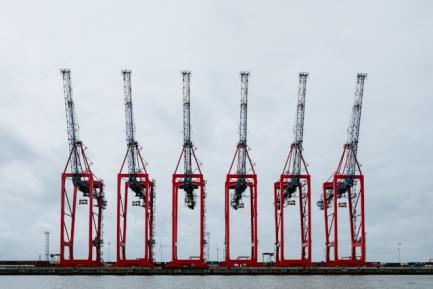From lettuce to cars: an analysis of the complexity of Spanish exports
The complexity of exports in the different autonomous communities
The external sector is one of the areas in which the profound transformation that the Spanish economy has experienced over the last decade can be seen. All of the Autonomous Communities (ACs) have increased their foreign trade, without exception, although there are significant regional differences in terms of the goods that are exported. Without a doubt, the idiosyncrasy of each Spanish region is reflected in its economic activity, as well as in what it exports. Thus, in order to characterise the type of products exported by each AC, we developed a measure for the degree of sophistication of the products exported by each of Spain’s ACs, which we call the export complexity index (ECI).1 This is a key indicator for assessing a country or region’s productive capacity, since it can be glimpsed in what it produces and exports.
This index is based on the complexity index at the product level developed by various academics from the University of Harvard and MIT2 (Product Complexity Index, or PCI) and the value of exports of each product exported by the various ACs (Datacomex provides us with data for 1,254 products3 for the years 2011-2017, inclusive).4 Specifically, an AC’s ECI is calculated as the sum of the PCI of each exported product, weighted according to the percentage of the total exports that each product accounts for.
The ECI highlights significant differences in the productive specialisation of the different ACs (see the first chart). Castile and León holds the top position in the ECI index ranking, with 57.3 points. This is 7.3 points above the average for Spain, which lies at precisely 50.0 points. In contrast, Murcia comes in last, with 39.3 points, 10.7 below the country’s average.
What products are responsible for these significant differences in the complexity of exports across regions?
In order to identify the reasons behind the differences in the ECI across regions, we began by sorting all exported products (a maximum of 1,254 products) according to their complexity (on the horizontal axis of the second chart) and the cumulative portion they represent of total exports (on the vertical axis). In this way, we can compare the complete distribution of the exports of the AC with the highest ECI (Castile and León) with those of the AC with the lowest ECI (Murcia), in relation to the aggregate total for the Spanish economy. This chart allows us to identify which products have a significant weighting in each region and, therefore, to determine the aggregate complexity of their exports. In the case of Castile and León, exports of passenger cars and of machinery and mechanical appliances stand out, both products with a high complexity. In Murcia, on the other hand, exports of fruits and vegetables (such as lettuce and citrus fruits) and those of petroleum oils stand out, which are products with a relatively low complexity, thus driving Murcia’s ECI down.
Finally, to grasp the overall picture, we grouped the 1,254 products into 53 major product categories5 and, in the attached table, we present the three main categories that make the biggest contribution to the ECI, both for the economy as a whole and for each AC. In the Spanish economy as a whole, the products that make the greatest contribution to the ECI are those related to the automotive industry, as they constitute the country’s main export product (17% of all exported goods) and they are relatively complex. The two other types of products that contribute significantly to Spain’s export complexity are: machinery and mechanical devices, and electrical devices and equipment, both with an above-average complexity and, therefore, a positive impact on the ECI.
Without commenting on each AC in detail, broadly speaking it can be seen that there are regions where the automotive sector plays a significant role (such as Castile and León, Navarre, the Basque Country, Aragon and Catalonia) and, given that the products of this sector have a higher-than-average complexity, this drives up the ECI in those regions. On the other hand, those regions with a greater presence of agricultural products (fruits and vegetables), such as Murcia, Andalusia and Extremadura, or products of the petrochemical sector, such as the Canary Islands, or beverages (including wine), such as La Rioja, have an ECI below the Spanish average. In many cases, this is the result of the clear competitive advantage of Spain’s regions in the production of these products, a factor that should not be squandered.
In short, we have seen that there are notable differences in the type of exports of the various ACs and, in particular, in their complexity. In a future article, we will see that the complexity of the exported products is intimately linked with the characteristics of each region’s labour market and the quality of the jobs they generate.
1. For more details, see C. Canals and J. Montoriol (2018), «La complejidad de las exportaciones españolas y la calidad del empleo», Papeles de Economía Española (due to be published soon).
2. For an analysis of the complexity of the exports of the Spanish economy as a whole, see «The complexity of Spanish exports» in the MR01/2018.
3. The products are defined on the basis of their Taric code, broken down to the four-digit level of detail.
4. Formally, the ECI formula is: \(ICE_{CA,\;t\;}=\sum_{n=1}^N\frac{\chi_{n,\;t}^{CA}}{X_t^{CA}}\ast PCI_{n,\;t}\)
Where n = 1, ..., N denotes the N different products exported, χ n,t the exports of each item in the year t, and X t the total exports of the region in the year t.
5. Specifically, we grouped these 1,254 products into 53 products or goods defined according to the first two digits of the Taric code.





